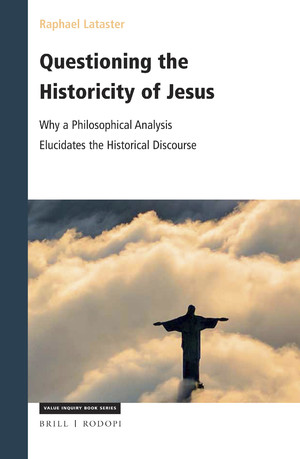 After reviewing the efforts of Bart Ehrman and Maurice Casey to present their respective cases for the historicity of Jesus we now come to chapter 4, Inadequate Methods. By way of summing up the previous discussion Raphael Lataster writes
After reviewing the efforts of Bart Ehrman and Maurice Casey to present their respective cases for the historicity of Jesus we now come to chapter 4, Inadequate Methods. By way of summing up the previous discussion Raphael Lataster writes
The recent defences of Jesus’ historicity by Bart Ehrman and Maurice Casey lack lucid and competent methodologies, rely on highly questionable documents, and further make use of sources that no longer exist, if they ever did. They are polemical, occasionally vulgar, and often resorted to cavilling, focussing on tangential arguments of the more amateurish mythicists. They unquestionably failed, and this may have something to do with my introductory thoughts on just what sort of scholar should be investigating the issue; analytical philosophers seem much more suited to the task. (p. 129)
In response to the objection that “ahistoricists” or “mythicists” do not have an alternative explanation for Christian origins Lataster is blunt:
This is similar to the agnosticism over God’s existence. Those agnostics do not need to have evidence that God does not exist. They just need to be unconvinced by the lack of good evidence for God’s existence. In other words, my case for Historical Jesus agnosticism does not need to rely on good alternative hypotheses, though it certainly can be strengthened by them. (p. 129)
History is done differently when it comes to Jesus. And those doing the history on Jesus are, in the main, theologians or “biblical scholars” of some stripe who cannot deny that
. . . most people know of Jesus because of the historical reality of religious faith. (p. 131)
It’s like saying “Most people know about the massacres of Aboriginals in the Frontier Wars because of what they’d been told.” So how do we go about finding the fact of the matter?
I bypass here Lataster’s discussion of the respective appeals to “insider” and “outsider” sources (those of believers and those of outsiders), or the little controversy over the Jesus Project initiated by R. Joseph Hoffmann that he also addresses.
Lataster begins the core argument of this chapter with the theoretically correct point, “History Concerns What Probably Happened.” I find such arguments too theoretical. Indeed, one of the historians Lataster cites in this section expresses my view exactly:
That history as record is “relative,” may be admitted, in the sense that deriving as it does from the perception and testimony of men [sic – published 1946], it often borrows shape and color from the subjective medium through which it passes. Furthermore, the objective facts are perhaps never reproduced in their full range of authentic detail. But it is folly to leap thence to the conclusion that nothing can be absolutely known about the historical past. That Napoleon Bonaparte existed, that he fought Europe, was worsted at Waterloo, and died at St. Helena, are facts which we can be said to know absolutely. On the other hand, that his personality was such or such, that he was dominated by this passion or that, may very well be matters about which we have not, and probably cannot have knowledge that is final and irreversible. . . .
But “probability beyond reasonable doubt,” if we overlook the contradiction involved in this statement, is equivalent to certainty. What we hold “beyond reasonable doubt,” we hold with certainty. . . .
Although the historian can never attain the same certainty which is attained by the mathematician, the physicist, or the chemist, nevertheless, especially in the case of converging lines of evidence, he is able to reach such moral certainty as is the basis of nearly all our actions. (Freeman, Methods of History)
(Garraghan, pp. 78, 79)
If we cannot see evidence that persuades us “beyond reasonable doubt” that Jesus existed then we are compelled to maintain reasonable doubts and not deny them. Juries are required to find a defendant guilty “beyond reasonable doubt” and not be content with a “probably guilty” verdict.
As for the sources historians study, they fall into two types: primary and secondary. Primary sources are generally understood to be contemporary with the events being studied, secondary from a later time. Both types of source must be subject to the same scrutiny and Lataster cites Garraghan three times in the book on this point: Continue reading “Review part 4: Questioning the Historicity of Jesus / Lataster (Case for Agnosticism – I, Methods)”
